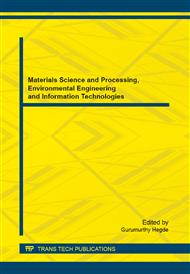p.619
p.623
p.629
p.635
p.643
p.647
p.654
p.661
p.668
Sparse Incremental Delta-Bar-Delta for System Identification
Abstract:
Metalearning algorithm learns the base learning algorithm, targeted for improving the performance of the learning system. The incremental delta-bar-delta (IDBD) algorithm is such a metalearning algorithm. On the other hand, sparse algorithms are gaining popularity due to their good performance and wide applications. In this paper, we propose a sparse IDBD algorithm by taking the sparsity of the systems into account. Thenorm penalty is contained in the cost function of the standard IDBD, which is equivalent to adding a zero attractor in the iterations, thus can speed up convergence if the system of interest is indeed sparse. Simulations demonstrate that the proposed algorithm is superior to the competing algorithms in sparse system identification.
Info:
Periodical:
Pages:
643-646
Citation:
Online since:
October 2014
Authors:
Price:
Сopyright:
© 2014 Trans Tech Publications Ltd. All Rights Reserved
Share:
Citation:


